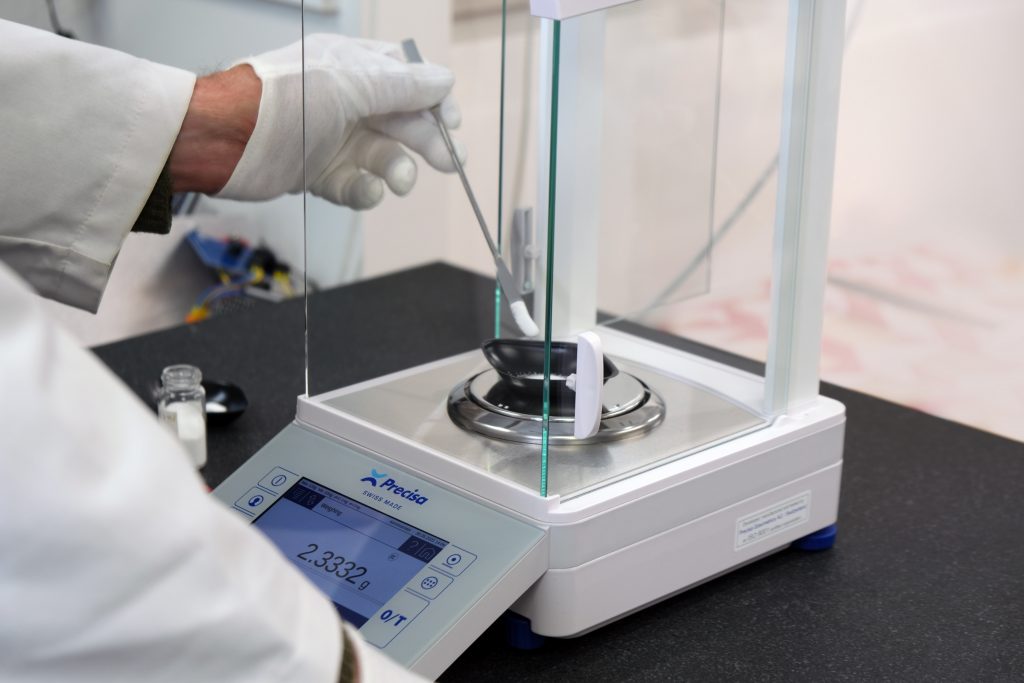GMP & GLP and What It Means For Weighing
In the pharmaceutical industry strict regulatory requirements exist for the manufacture of pharmaceutical products, known as Good Manufacturing Practices (GMP) and Good Laboratory Practices (GLP). Since weighing is a critical part of the manufacturing process, it is imperative that balances are selected which are specifically designed for used in GMP and GLP environments.
Considerations for the weighing process include the following factors:
- SUITABILITY: the weighing balance must have the suitable readability and capacity for the object being weighed.
- RESOURCES: The instrumentation must be in proper working order (i.e. calibrated and well maintained) and the researcher’s qualifications and training should be documented.
- RULES: Weighing procedures should be conducted using correct written protocols providing the design and timeframe used.
- RESULTS: The final report must include an account of the way the study was performed and the scientific interpretation of the data.
- INTEGRITY: Any data print-outs for tracking, quality control and traceability need to include the ID of the balance used, the date and time.
Best Weighing Practice
Increasing attention is being directed towards good weighing practice in laboratories because it is one of the most commonly performed tasks. Focus on the accuracy and suitability of the weighing balance and the various elements that influence the weighing process is crucial. Therefore, GLP compliance is a frequent selling point for laboratory balances such as the ones produced by Precisa.
Factors Influencing Weighing Results
Good laboratory practice involves the elimination of the following various external factors that can affect weighing measurements and compromise the accuracy of results.
- VIBRATIONS: Balances should be set up on a stable and level surface with no vibrations to prevent fluctuations in readings due to shifts in the balance level.
- TEMPERATURE:Balances should be kept in a temperature controlled environment, out of direct sunlight and the direct line of ventilation.
- OBJECT HANDLING: Gloves should be worn and forceps used when handling small weights to prevent any fluctuations to their weight.
- OPERATION:Balances should be operated carefully to provide consistency in repeated measurements. For example, weights should be placed gently at the centre of the weighing pan and care should be taken not to shock load the balance.
- SUFFICIENT POWER: Balances must have had a constant power flow of 30 minutes to 1 hour in order to ensure that the electrical components have reached the correct thermal equilibrium.
- CLEANING & STORAGE: Balances must be stored away from dust or liquids and kept clean to avoid contamination which can compromise accuracy.
To find out more read our Guide to Weighing Balance Accuracy.
Get In Touch
If you would like to find out more about GLP in the Lab for weighing, please don’t hesitate to get in touch with a member of our team today.
We have a wide range of precision and analytical balances in compliance with GLP which can be viewed on our website.
To keep up to date with the latest news and products from Precisa, why not follow us on social media?




